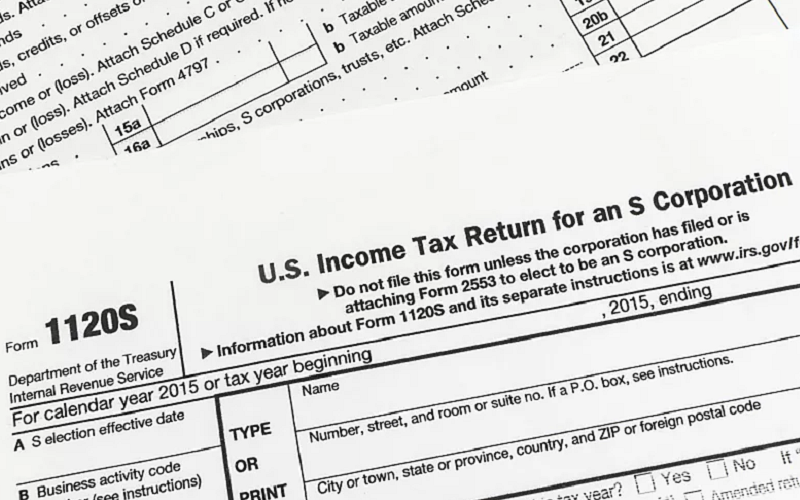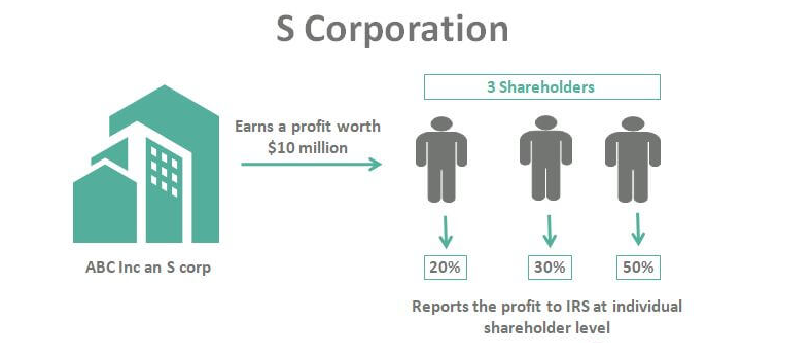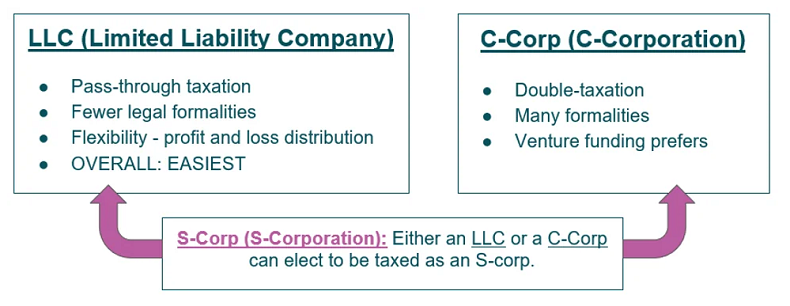
As a business owner, understanding the different types of corporate structures and how they can benefit your business is a crucial step towards your success. One such structure that offers significant advantages is the S-Corporation. Here we explore the S-Corporation history, its appeal, and the process of forming one. We then highlight the key advantages that make this structure an attractive choice for small businesses.
Contents
- Introduction to S-Corporations
- The Process of Forming an S-Corporation
- Key Advantages of S-Corporations
- Efficiently Managing Your S-Corporation
- Strategies to Maximize S-Corporation Benefits
- References
Introduction to S-Corporations
In the complex world of business structures, the S-Corporation often stands out for its unique benefits and appeal to small business owners. However, before we delve into these details, it’s important to understand what an S-Corporation is and how it has evolved over time.
Brief History and Definition of S-Corporations
The concept of S-Corporations originated in the United States with the Revenue Act of 1954. Named after Subchapter S of Chapter 1 of the Internal Revenue Code, an S-Corporation is a type of corporation that meets specific Internal Revenue Service (IRS) criteria. The designation allows the corporation’s income, deductions, and credits to pass through to its shareholders for federal tax purposes.
This structure was introduced to level the playing field, allowing small businesses to compete with larger ones. Previously, small businesses had to choose between the individual liability protection offered by a corporation and the tax benefits of a partnership or sole proprietorship. The S-Corporation structure combined these advantages, offering both limited liability and pass-through taxation.
The Appeal of S-Corporations to Small Business Owners
S-Corporations have become a popular choice for small businesses for several reasons. One major appeal lies in the tax advantages. Unlike traditional C-Corporations, which face double taxation on corporate profits and dividends, S-Corporations are only taxed at the shareholder level. This means profits and losses can pass through to the shareholders’ personal income without facing corporate tax rates.
Additionally, the limited liability protection offered to S-Corporation shareholders is another significant advantage. This ensures that shareholders’ personal assets are protected from the company’s debts and liabilities.

The Process of Forming an S-Corporation
Embarking on the journey of forming an S-Corporation requires understanding the critical steps involved. Although it may seem overwhelming at first, with careful planning and preparation, the process can be broken down into manageable stages.
Steps to Incorporating Your Business
Forming an S-Corporation typically starts with the same steps as forming a regular corporation or C-Corporation. This is because an S-Corporation is essentially a special tax status granted to corporations that meet certain IRS criteria [1].
Selecting a Company Name
The first step is selecting a name for your company. This name should be unique and not already in use by another business in your state. Most states have an online database where you can check the availability of a business name.
Appointing Directors
Next, you’ll need to appoint the initial directors of your corporation. These individuals will have the responsibility of overseeing the corporation’s operations and making significant business decisions.
Filing Articles of Incorporation
The next step is filing the Articles of Incorporation with your state’s Secretary of State office. This document includes important information about your corporation, such as its name, address, and the names of the initial directors.
Creating Bylaws
Creating corporate bylaws is another crucial step. These bylaws will dictate how your corporation will be run, including details about shareholder meetings, the roles of directors and officers, and how disputes will be resolved.
Once your corporation is established, it’s essential to create a shareholder agreement. This document outlines the rights and obligations of the shareholders, the protection of minority shareholders, the procedure for selling shares, and the process for dispute resolution. It serves as a crucial tool in maintaining smooth and efficient operations and avoiding potential conflicts [2].
Qualifications for S-Corporation Status
Finally, to qualify for S-Corporation status, your corporation must meet specific IRS criteria.
An S-Corporation must not have more than 100 shareholders. For counting purposes, families are often treated as a single shareholder.
All shareholders must be individuals, certain types of trusts, or estates. Other corporations or partnerships cannot be shareholders, and all shareholders must be either U.S. citizens or residents.
The Single Class of Stock Provision
An S-Corporation can only have one class of stock. However, it can have voting and non-voting shares within that single class of stock.
Once your corporation meets these qualifications, you’ll need to file Form 2553 with the IRS to elect S-Corporation status. This election must be made no more than two months and 15 days after the beginning of the tax year the election is to take effect.

Key Advantages of S-Corporations
One of the primary reasons small business owners opt for S-Corporation status lies in the unique benefits this structure offers. These advantages play a pivotal role in how the business operates, its tax situation, and how it plans for the future.
The Pass-Through Taxation Advantage
Perhaps the most significant benefit of an S-Corporation is the pass-through taxation feature. Unlike traditional corporations, S-Corporations do not pay federal income taxes at the corporate level. Instead, the corporation’s income, losses, deductions, and credits pass through to the shareholders.
Shareholders then report these amounts on their personal tax returns and pay tax at their individual income tax rates. This structure allows S-Corporations to avoid the double taxation (taxation at both the corporate and individual level) that C-Corporations are subject to. For many small businesses, this can lead to considerable tax savings [3].
The Liability Protection Advantage
In addition to tax benefits, S-Corporations offer their shareholders limited liability protection. This means that the shareholders’ personal assets are generally protected from the corporation’s debts and liabilities.
So, if the corporation faces a lawsuit or declares bankruptcy, the shareholders’ personal assets such as their homes, cars, and personal bank accounts are not at risk. The shareholders’ liability is typically limited to the amount they have invested in the corporation. This protection gives business owners peace of mind and is a major advantage of incorporating.
The Transfer of Ownership Advantage
S-Corporations also offer the advantage of easy transfer of ownership, compared to other structures like partnerships or LLCs. The sale, purchase, or gifting of stock can facilitate changes in ownership, without disrupting business operations. Moreover, there are no restrictions on the sale of stock (other than the requirement to maintain S-Corporation eligibility criteria), which adds to the flexibility and attractiveness of this business structure.

Efficiently Managing Your S-Corporation
The benefits of an S-Corporation are significant, but they also come with a responsibility to manage your corporation effectively. An efficiently run S-Corporation not only maximizes its benefits but also minimizes potential risks and challenges.
Maintaining Compliance with State and Federal Regulations
Running an S-Corporation involves meeting specific state and federal regulations. This can include filing an annual report, maintaining a registered agent, keeping updated records of corporate meetings, and of course, ensuring that the company meets the IRS’s criteria for S-Corporation status.
Compliance is crucial not just to retain your S-Corporation status, but also to avoid fines, penalties, and potential legal issues. Regularly reviewing your compliance with these regulations and seeking legal advice when necessary can help you maintain a healthy and legally sound business [4].
An S-Corporation’s shareholder agreement is a vital document that outlines the rights and responsibilities of each shareholder. It’s essential to review this agreement regularly and update it as needed, especially as the business grows and changes.
An updated shareholder agreement can prevent misunderstandings, protect shareholders and the corporation, and provide clear procedures for resolving disputes. The agreement should also be reviewed by a legal professional to ensure it covers all necessary elements and meets all legal requirements.
Utilizing Professional Services for Financial Management
Financial management is a critical aspect of running an S-Corporation. This can include bookkeeping, tax planning and preparation, payroll management, and financial reporting.
While it may be tempting to handle these tasks in-house to save money, utilizing professional services can often provide more value in the long run. A professional can help ensure accuracy, compliance with tax laws, and efficient financial management, allowing you to focus more on running your business. Plus, professionals are updated on the latest laws, regulations, and strategies that could benefit your S-Corporation.
Strategies to Maximize S-Corporation Benefits
While simply having S-Corporation status comes with inherent benefits, there are additional strategies that you can employ to maximize these advantages.
Salary and Dividend Distributions Strategy
One strategy that can maximize your S-Corporation’s tax benefits is the balance between salary and dividend distributions. As an owner-employee of an S-Corporation, you can take a portion of your income as salary and the rest as dividends.
Salary is subject to employment taxes, but dividends are not. So, by minimizing your salary and maximizing your dividend distributions, you can reduce your overall tax liability. However, it’s important to note that the IRS requires your salary to be “reasonable” for your position and industry. This strategy should therefore be used carefully and with the advice of a tax professional [5].
Timing of Income and Expenses Strategy
Another tax strategy for S-Corporations involves the timing of income and expenses. By strategically planning when to recognize income and when to pay expenses, you can have more control over your tax liability for any given year.
For example, if you expect a lower income in the next year, you might choose to defer some income to that year. Conversely, if you anticipate a higher income in the next year, you might choose to accelerate your expenses. This is a complex strategy that should be executed with the help of a professional to ensure compliance with tax laws.
Use of Fringe Benefits Strategy
S-Corporation shareholders who are also employees can benefit from certain fringe benefits. These can include health and accident insurance, group term life insurance, and certain types of retirement plans.
The premiums paid by the S-Corporation for these benefits are often deductible by the corporation and can be excluded from the shareholder-employee’s income. This can provide significant tax savings. However, these rules are complex and can vary based on the percentage of the corporation owned by the shareholder-employee, so professional advice is essential.
Leveraging these strategies can help you maximize the benefits of your S-Corporation. However, remember that every business is unique, and these strategies should be adapted to fit your specific circumstances. Always seek professional advice before implementing any major changes to your business or tax strategy.
References
[1] S corporations: What they are and 5 benefits of becoming one
[2] Benefits of S Corp: Everything You Need to Know
[3] Should You Set up Your Business as an LLC or an S Corporation?
[4] From Cubicle to Incorporated: The 6 Benefits of Forming an S Corporation
[5] S Corporation (S Subchapter)
